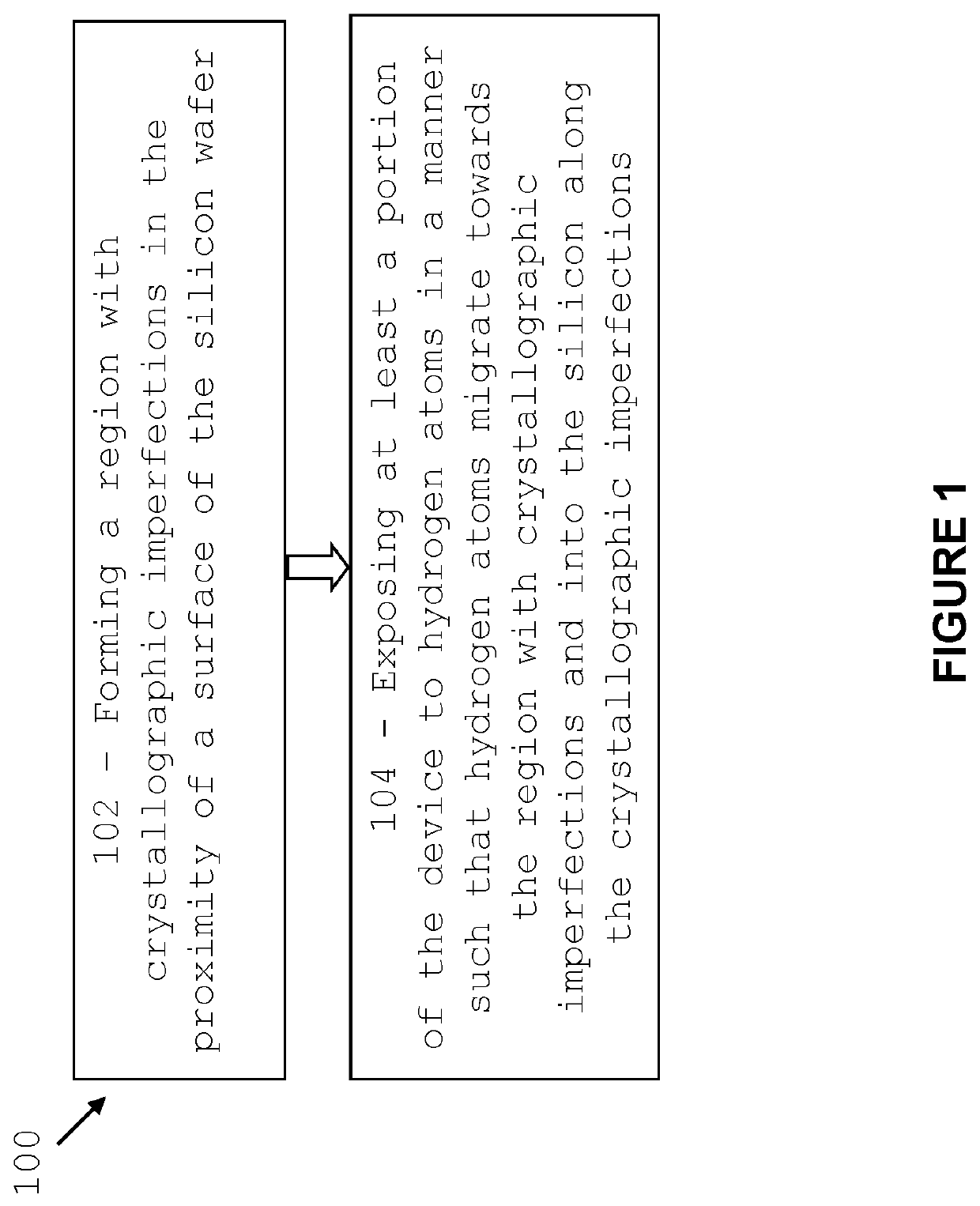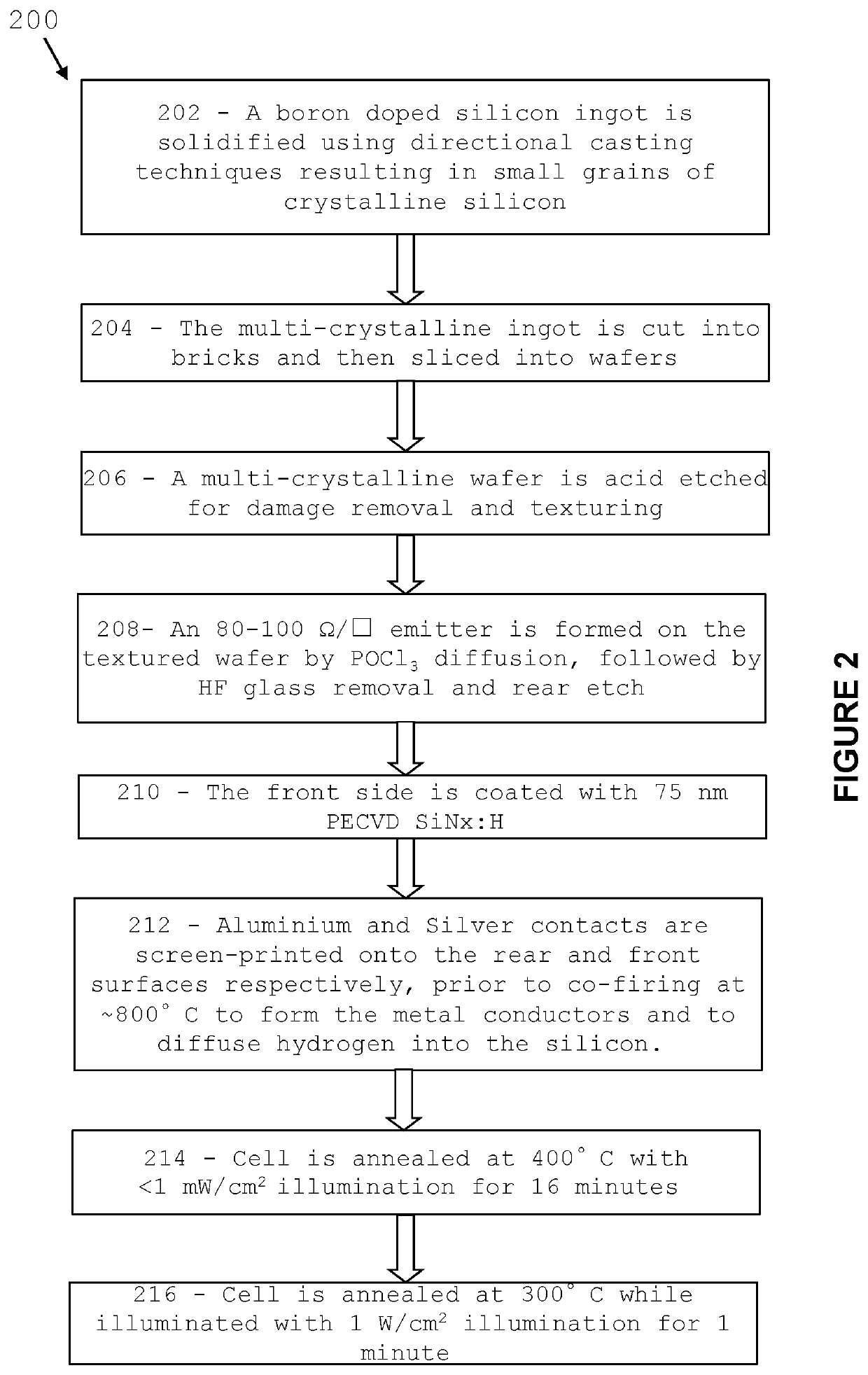Method for improving wafer performance for photovoltaic devices
a photovoltaic device and wafer technology, applied in the manufacture of final products, basic electric elements, sustainable buildings, etc., can solve the problems of reducing the performance of the wafer, and the difference between the quality of the wafer and so as to reduce the auto-generation of the hydrogen neutral charge-state fraction, and reduce the cost of the wafer
- Summary
- Abstract
- Description
- Claims
- Application Information
AI Technical Summary
Benefits of technology
Problems solved by technology
Method used
Image
Examples
Embodiment Construction
[0030]Embodiments of the present invention relate to the field of photovoltaics and processing of wafers, such as silicon wafers for manufacturing photovoltaic devices. In particular, embodiments relate to the incorporation of manufacturing processes to improve quality of silicon wafers and photovoltaic devices.
[0031]This disclosure is relevant to all crystalline and multi-crystalline silicon solar cells that capitalise on the hydrogen passivation of defects and / or recombination by diffusing or implanting or driving hydrogen into the defected regions of the silicon material and coupling some of this hydrogen preferentially to deep into the silicon material from one or more external hydrogen sources.
[0032]A silicon solar cell in the presence of one or more hydrogen sources that are able to thermally diffuse hydrogen into one or more of the surfaces of the silicon wafer that has crystallographic defects in the vicinity of the wafer surface. These defects preferably extend from the sur...
PUM
| Property | Measurement | Unit |
|---|---|---|
| temperature | aaaaa | aaaaa |
| temperature | aaaaa | aaaaa |
| temperature | aaaaa | aaaaa |
Abstract
Description
Claims
Application Information
 Login to View More
Login to View More - R&D
- Intellectual Property
- Life Sciences
- Materials
- Tech Scout
- Unparalleled Data Quality
- Higher Quality Content
- 60% Fewer Hallucinations
Browse by: Latest US Patents, China's latest patents, Technical Efficacy Thesaurus, Application Domain, Technology Topic, Popular Technical Reports.
© 2025 PatSnap. All rights reserved.Legal|Privacy policy|Modern Slavery Act Transparency Statement|Sitemap|About US| Contact US: help@patsnap.com


